Last Chance to Catch NYC's Holiday Notalgia Train
We met the voices of the NYC subway on our nostalgia ride this weekend!


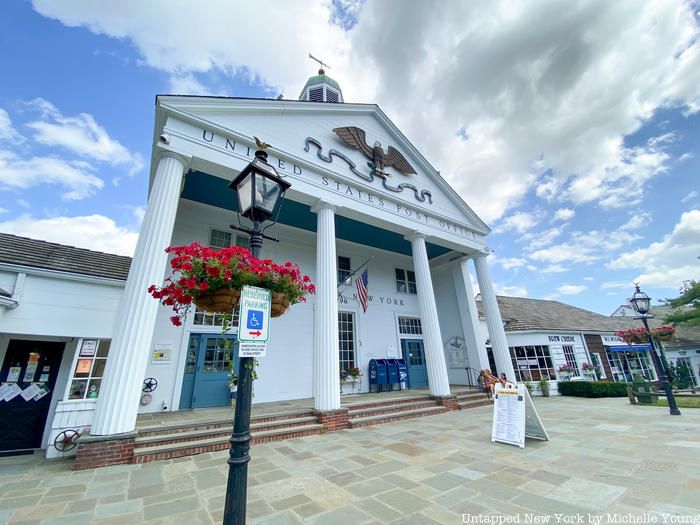
Stony Brook, Suffolk County is a historic hamlet on Long Island’s North Shore with many historic structures, modern architecture, and natural features. Originally known as Wopowog, the land was settled by the Setalcott tribe until the land was purchased in 1655. The area was known for its historic grist mill and colonial buildings, one of which housed the famous artist William Sidney Mount. Stony Brook developed rapidly in the 1870s with the arrival of the Long Island Rail Road.
The area saw a growth in commerce especially after the creation of the Stony Brook Village Center, and today Stony Brook is perhaps best known for the state university, Stony Brook University. The area is also very close to Setauket, a historic village that played a major role in the Culper Spy Ring throughout the Revolutionary War. Here is our guide to historic sites across Stony Brook, Long Island!
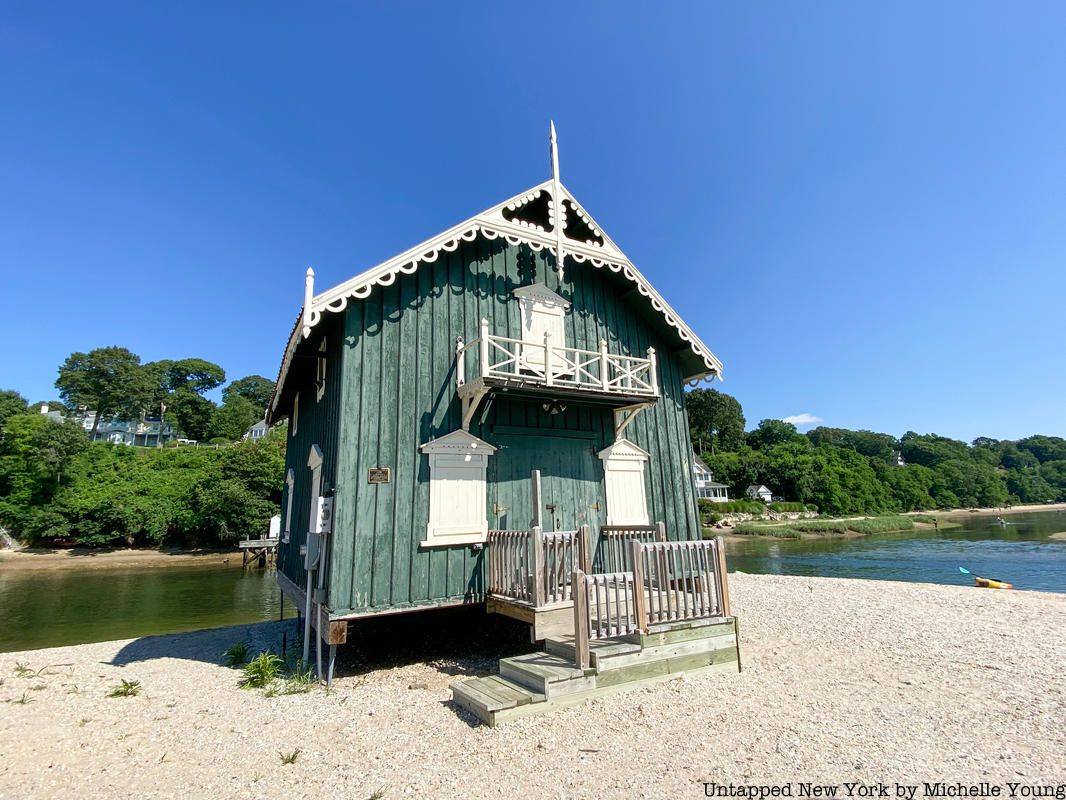
The Gamecock Cottage is a historic Gothic Revival-style building built in around 1876, probably as a safe haven for yachtsmen, according to the Three Village Community Trust, which stewards the site. The one-and-half-story building, which used to be rented out in the summer, is listed on the National Register of Historic Places and is situated on the West Meadow Wetlands Reserve and includes a front-gabled roof with bright-white windows. The cottage has been owned by the Town of Brookhaven for over 60 years, and it is often considered “the most painted and photographed structure in the Three Villages.”
It is located at the very westward end of the beach called Shipman’s Point on a narrow peninsula, down the road from what was once a row of nearly 100 wooden beach cottages that were constructed during the 1920s and 1930s. Controversy over the construction of private homes on public land increased over the years, and as plans were made by local officials to return this area of the beach to its natural state, the local community rallied to get the cottages landmarked. Despite successful addition of the West Meadow Beach Historic District to the National Register of Historic Places, almost all the cottages were bulldozed anyway. Another great way to visit the Gamecock Cottage is by kayak.

The Stony Brook Village Center is a historic commercial center created by philanthropist Ward Melville as a “living Colonial Williamsburg.” The village center was built in the style of a traditional New England village in 1941 with clapboard buildings and quaint stores. Many existing shops were moved together into a crescent shape in a design similar to colonial Williamsburg. The center is home to the Stony Brook Post Office (whose eagle flaps its wings at the beginning of each hour), as well as a number of restaurants, gift shops, clothing stores, and professional services.
Popular restaurants in the village center include Robinson’s Tea Room, Sweet Mama’s, and Fratelli’s Italian Eatery. Across the way from the Village Center is Mirabelle Tavern and Restaurant (found in the historic Three Village Inn. For spirits and food specialties, Chocolate Works offers a wide selection of chocolate varieties while The Crushed Olive serves a number of olive oils and vinegars. Lakeside Wine Emotions is owned by the no-nonsense Frenchman, Christophe Lhopitault, who was once the Captain at Daniel Boulud. He may dismiss your wine choices, but will always get you what you actually want in the end! Other notable destinations in the village center include Rocky Point Jewelers West, Open House Country Flowers & Interiors, Madison’s Niche, and Educational & Cultural Center Gift Shop.
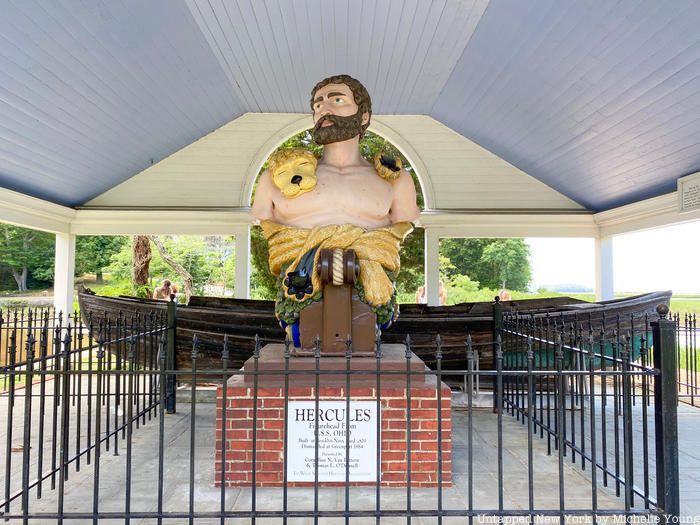
Overlooking Stony Brook Harbor just across from the Stony Brook Village Center, the Hercules Pavilion on Main Street houses the figurehead and anchor from the prestigious U.S.S. Ohio, the first ship launched from the Brooklyn Navy Yard in 1820. Although the U.S.S. Ohio was destroyed and sunk in Greenport, Suffolk County, the massive bust of Hercules was saved and originally sold for $10 to the Aldrich family of Aquebogue. Ward Melville later acquired the bust in 1954 for preservation, and it is said that if you kiss the brow of Hercules, you’ll be married within a year.
The pavilion also houses the Polaris Whaleboat, thought to be the only surviving artifact from the Charles Hall expedition to the Arctic in 1870. It was placed in the American Museum of Natural History after it was recovered by Robert Peary in 1905, and 40 years later, naturalist Robert Cushman Murphy transferred the Polaris to the collection of Ward Melville.
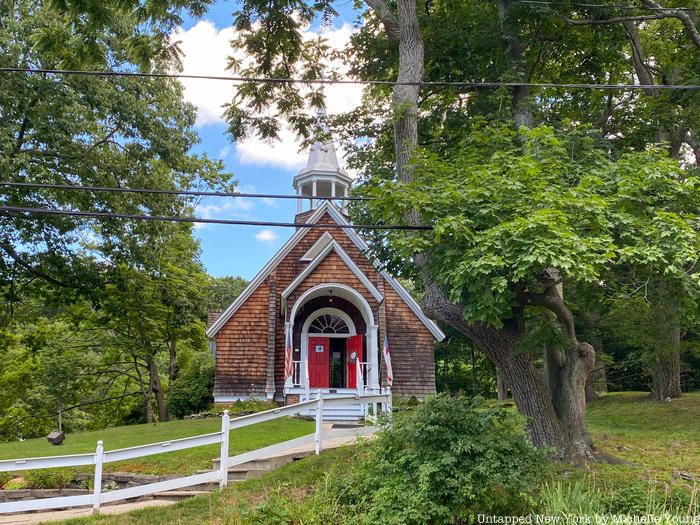
All Souls Episcopal Church, previously named St. James Church, is a historic chapel on the east side of Main Street next to the Stony Brook Village Center. It was designed by notable architect Stanford White, a partner in the architectural firm McKim, Mead & White and architect behind the Washington Square Arch, the second Madison Square Garden, and more. The church was built in 1889 with a gabled roof, octagonal bell tower, and an open arcaded porch. The church also features a bright-red door and wooden frame, and it was added to the National Register of Historic Places in 2000.
Stanford White also designed a Gilded Age estate in historic Stony Brook, overlooking the Long Island Sound and West Meadow Beach. Although the property has been subdivided several times, the mansion and a sizable property still remains and is a private home.
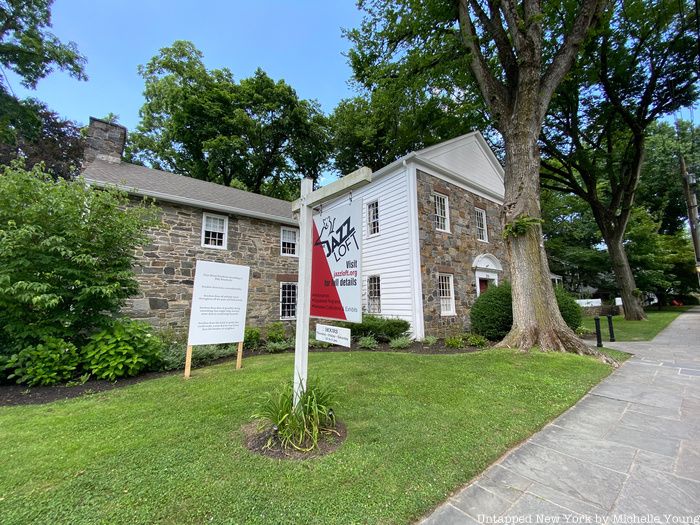
The Jazz Loft, currently closed due to COVID-19, is a museum and music education space that opened in 2016. The handsome fieldstone building was originally the site of the Suffolk Museum, now the Long Island Museum, and the building later served as the Garden Exchange for roughly 40 years.
The Jazz Loft frequently invites local, national, and international jazz artists to their 1940s-esque second-floor performance space. In addition to a monthly lecture series, the Jazz Loft features original jazz memorabilia, photographs, and art spanning 100 years of American history. New signs have been added on the front lawn with inspiring quotes from jazz musicians.

The WIlliam Sidney Mount House, at 1556 Stony Brook Road, was the long-time home of artist William Sidney Mount, a contemporary of the Hudson River School best known for his genre paintings. Works of his life The Painter’s Triumph, Cider Making, and Caught Napping are currently located in the Pennsylvania Academy of Fine Arts, the Metropolitan Museum of Art, and Brooklyn Museum respectively.
The home was built in 1725 and enlarged in 1810, notable for its yellow exterior. Mount’s grandfather Eleazer Hawkins originally built the original home as a tavern, yet it soon after became Mount’s art studio. 2-1/2 story wood-frame home features a gabled roof and shingled exterior, and it was added to the NRHP in 1965. The home is now owned by the Long Island Museum and occasionally is open for tours.

The Stony Brook Grist Mill on Harbor Road is a historic grist mill near the Avalon Nature Preserve and T. Bayles Minuse Pond, just down the street from the Stony Brook Village Center. The mill structure dates back to around 1751, preceded by an earlier grist mill built in 1699 by Adam Smith. Grain grounds at the grist mill were taken by the British during the American Revolution, and by the 1800s, catawba grapes were pressed and fermented at the mill after a vineyard was planted around the mill. Up until the 1950s, farmers still brought their wheat and corn to the mill, which was acquired by philanthropist Ward Melville in 1947.
The nearby Avalon Nature Preserve is a privately run nature sanctuary with 216 acres of fields, forests, and wetlands, 140 of which are opened to the public. The preserve is currently working on a deer study of the local deer population.
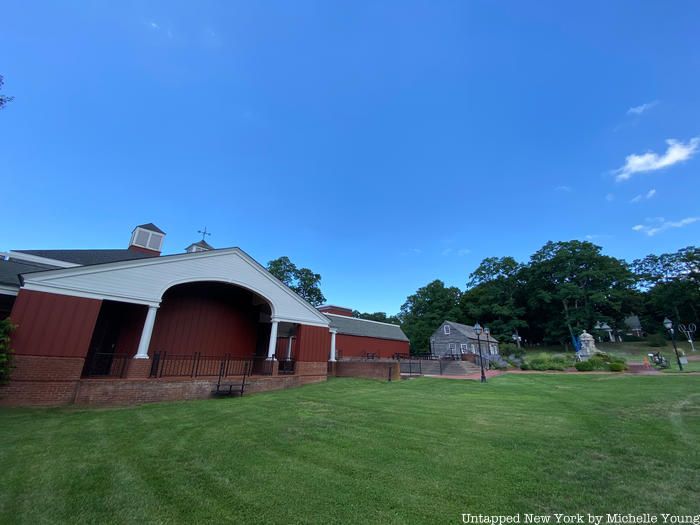
Although temporarily closed, the Long Island Museum along Route 25A is an American art, history, and carriage museum that preserves Long Island artifacts. The museum was founded in 1939 as the Suffolk Museum by Ward Melville, who established it with his wife Dorothy, prominent naturalist Robert Cushman Murphy, a well-regarded local doctor Winifred Curtis, and insurance broker O.C. Lempfert. Like the Stony Brook Village Center, the museum evokes a New England village with historic buildings dating back to 1874.
The museum contains over 50,000 artifacts divided between art and archives, history, and carriage. The museum contains about 450 paintings and an addition 2,000 works on paper, with featured artists including Louis Comfort Tiffany, William Merritt Chase, and Charles Henry Miller. The museum also houses the largest collection of works by notable artist William Sidney Mount, who lived in Stony Brook. Among the museum’s history artifacts is a collection of over 10,000 historic textiles from the 18th century to present, folk art waterfowl decoys, and indigenous furniture. The carriage collection features about 25,000 non-vehicular artifacts and about 200 horse-drawn vehicles, including the Tally-Ho Rail Coach (1875), Gypsy Wagon (1860-1885), and Grace Darling Omnibus (1880).

The Hawkins Homestead, at 165 Christian Avenue, is a historic Stony Brook home that dates back to around 1660. The home is named after Zachariah Hawkins, one of the early proprietors of the Town of Brookhaven. The historic home consists of a mid-17th-century-story house as well as a large mid-18th-century and early-19th-century 2 1/2-story. The home is also part of the Bethel-Christian Avenue-Laurel Hill Historical District in Setauket, and it was added to the NRHP in 1988.
The home has been owned by the Three Village Community Trust since 2013, when the organization acquired the property when it was in need of restoration.

The Nathaniel Longbotham House, located at 1541 Stony Brook Road, is a historic home dating back to around the year 1690. The Longbotham family was a prominent Stony Brook-area family whose members Henry and his wife Mary also lived at the estate. A will dated back to December 1772 reveals that Nathaniel Longbotham left the estate to his wife Mary and daughter Ruth.
The American Colonial-style 1 1/2 story half-house was added to the NRHP in 1989, and near the historic home is an early-19th-century shed and late-17th- or early-18th-century well.
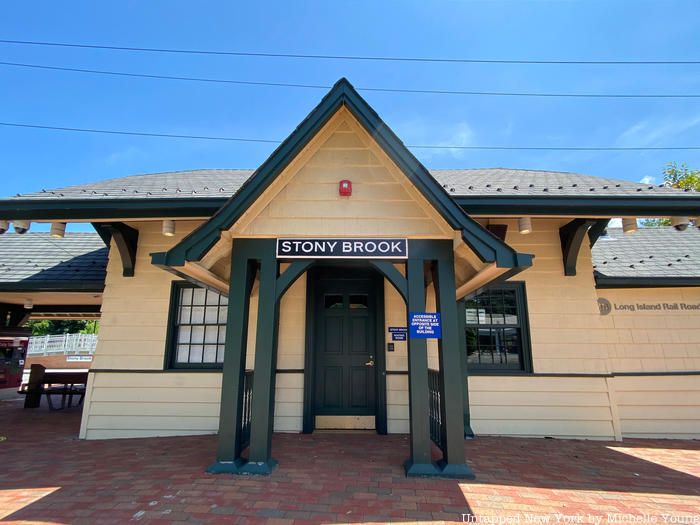
A visit to Stony Brook is easy. The Long Island Railroad Stony Brook stop takes you to the southern side of the SUNY Stony Brook Campus. To get to the historic sites here, most of which are situated around the Stony Brook Village Center, your best bet is to grab a taxi at the train station. You can also check out the Stony Brook University campus, where earlier this year, a field hospital had been built for COVID-19.
Stony Brook University is the largest single-site employer on Long Island with an enrollment of almost 27,000 students. Stony Brook University is well known for its science research, with notable projects like discovering the link between emphysema and smoking and identifying and cataloging 328 distant galaxies. The university was originally established in Oyster Bay as the State University College on Long Island, yet in 1960, Governor Nelson Rockefeller commissioned a new university in the Stony Brook area with a generous donation of 400 acres by Ward Melville. By 1962, the university had just 782 enrolled students, but by 1969 this number grew to over 8,000.
Notable sites around campus include the Charles B. Wang Center, dedicated to understanding East Asian and American cultures, which was designed by architect P.H. Tuan to evoke aspects of a pagoda, Shanghai temples, and rice paper. Additional sites of interest include the Student Activity Center, the Frank Melville Jr. Memorial Library, and the Staller Center for the Arts, as well as a number of sports facilities and nature sites.
Next, check out 12 Places to Discover in Port Jefferson, Long Island!
Subscribe to our newsletter